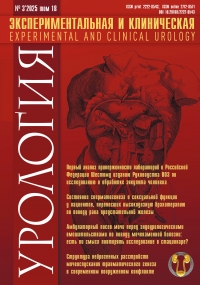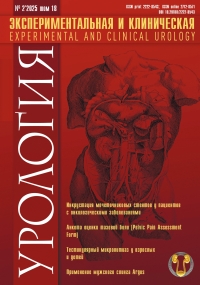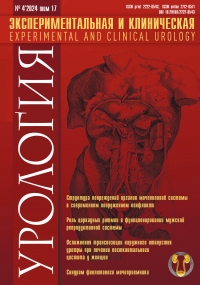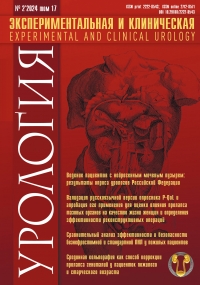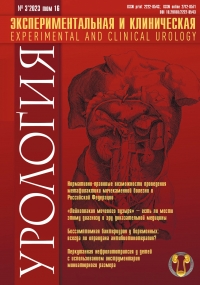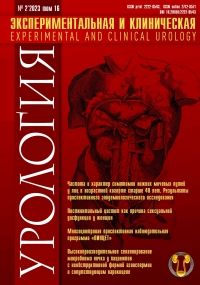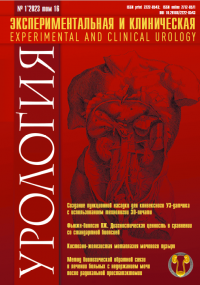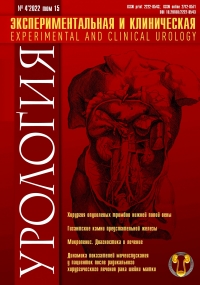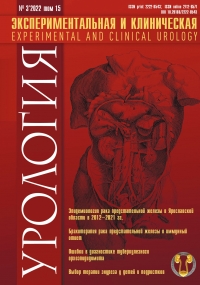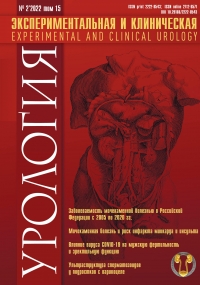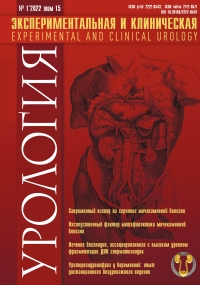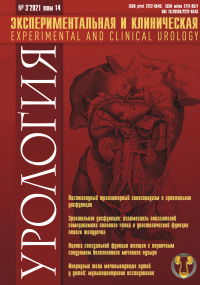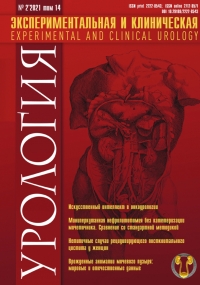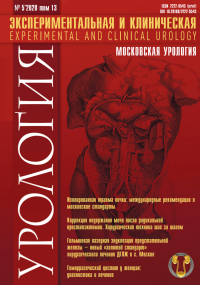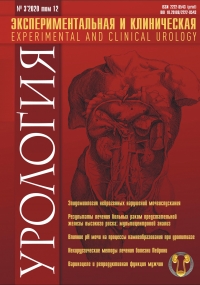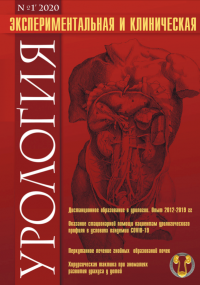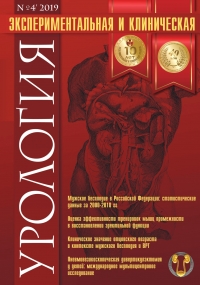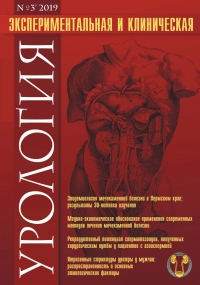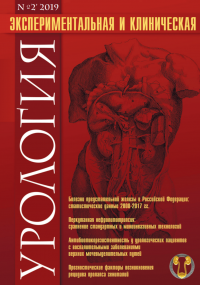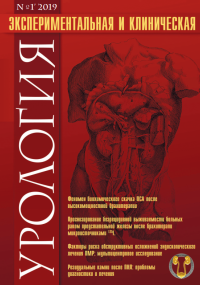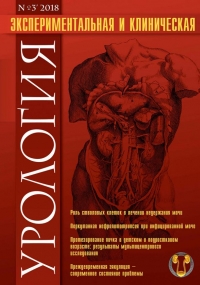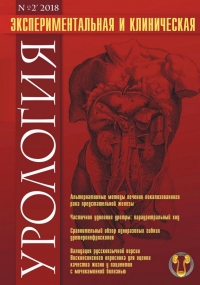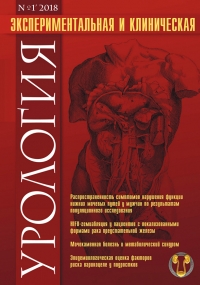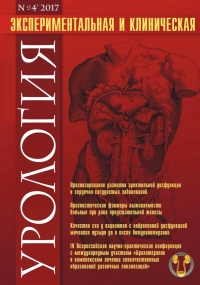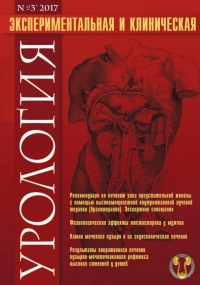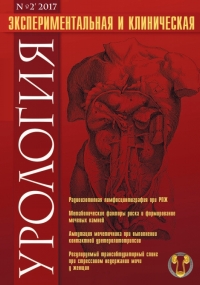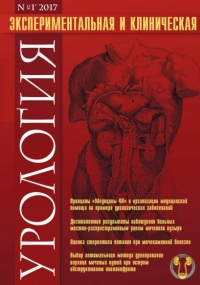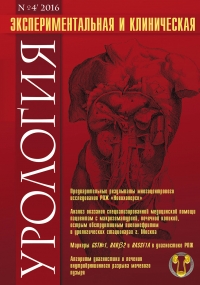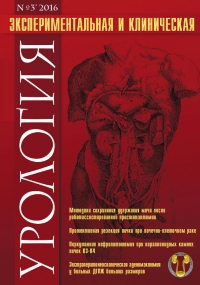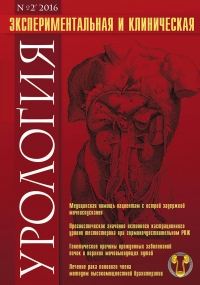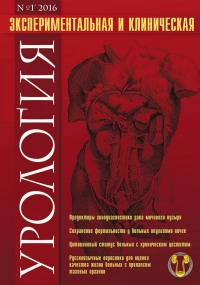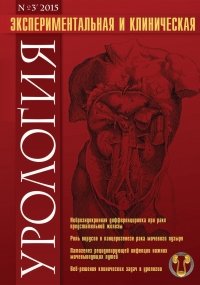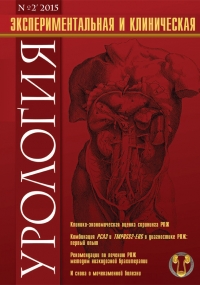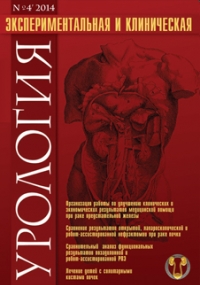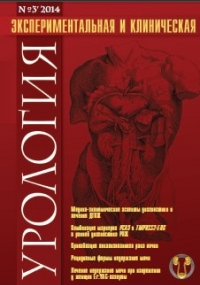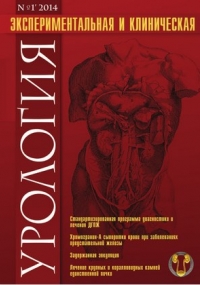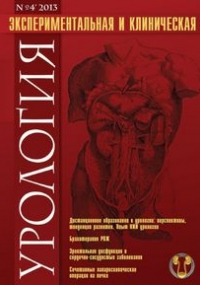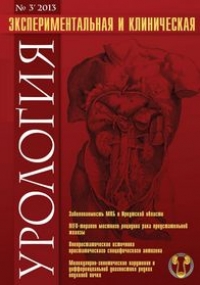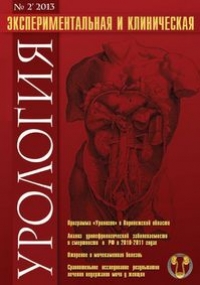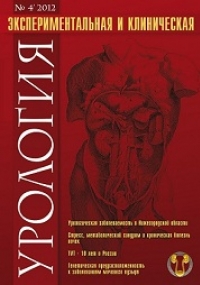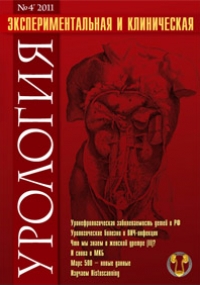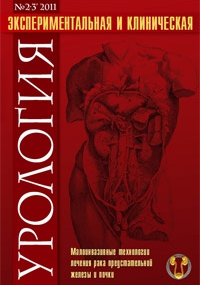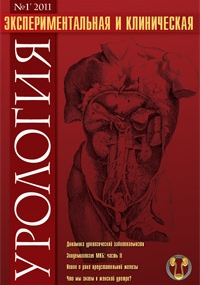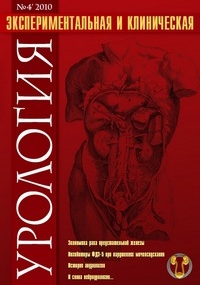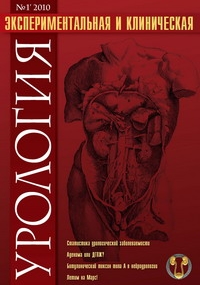Uretero-intestinal anastomoses: which method to choose? History, current state of the issue and own experience DOI: 10.29188/2222-8543-2021-14-1-108-113
- Nesterov P.V. – PhD, head of the state budgetary institution of health care of the Yaroslavl region «Clinical oncological hospital»; Yaroslavl, Russia; https://orcid.org/0000-0002-7405-0305
- Ukharskiy A.V. – PhD, deputy head for strategic development of the state budgetary institution of health care of the Yaroslavl region «Clinical oncological hospital»; Yaroslavl, Russia; https://orcid.org/0000-0001-5777-2261
- Gurin E.V. – head of the oncourology department of the Yaroslavl region «Clinical oncological hospital»; Yaroslavl, Russia; https://orcid.org/0000-0002-9448-4768
- Metelkova E.A. – oncologist, urologist of the oncourology department of the Yaroslavl region «Clinical oncological hospital»; Yaroslavl, Russia; https://orcid.org/0000-0003-3028-2494
 1268
1268 Introduction. At the moment, after performing a cystectomy, one of the most urgent issues remains the choice of technique for performing uretero-intestinal anastomoses.
Materials and methods. The search of the information was conducted in the Pubmed and Scopus databases, with a scientific electronic library Elibrary.ru and websites of professional urological and oncological associations. The search was performed for the keywords «Radical cystectomy», «uretero-intestinal anastomosis», «bladder cancer», and «neobladder». For citation in the article, 44 publications were selected. We also present our own data – long-term functional results of radical cystectomy for muscle-invasive bladder cancer for the period from 2016 to 2020.
Results. The article presents a literature review on the development of modern methods for creating uretero-intestinal anastomoses in various clinical situations. The methods are presented in chronological order of their description in the literature, indicating the advantages, disadvantages and long-term results. In all 75 cases included in the analysis, a direct uretero-intestinal anastomosis was performed. In the early postoperative period, the failure of the anastomosis with the development of urinary peritonitis was detected in 2 (2.7%) patients. Six months after the operation, unilateral anastomotic stricture was detected in 2 patients (2.7%). Reflux of urine, without radiological signs of expansion of the renal cavity system and decreased renal function, was observed in 1 patient after orthoptic plastic surgery of the bladder.
Conclusion. Performing urinary-intestinal anastomoses without antireflux mechanisms does not lead to deterioration of long-term functional results and is associated with a low frequency of strictures.
| Attachment | Size |
|---|---|
| Download | 556.97 KB |


